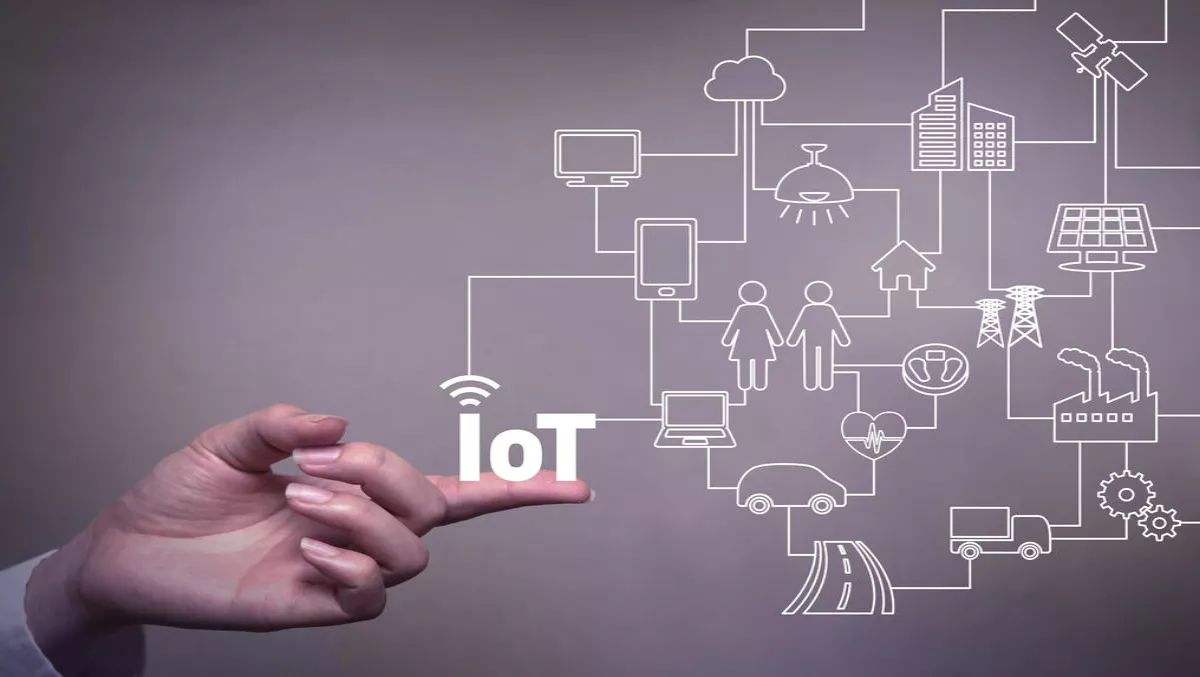
Unlocking the future of IoT: Five key areas to watch
We don't need a crystal ball to predict another year of growth for the Internet of Things (IoT). More illuminating by far are signs that IoT is becoming more practical. Here are a few trends that make me hopeful that we're now entering a time when IoT deployments will be increasingly effective, as well as more widespread.
1) In-depth defence
Criminals are always looking for new avenues into corporate networks. With consumer devices like IoT wearables and smart coffee pots making their way into the workplace, many enterprises now understand the need for more than DDoS Protection.
Even so, we will inevitably see more IoT systems being targeted by hackers this year as vulnerability scans against IoT devices continue to skyrocket. Organisations will have to rethink their security policies in light of these evolving threats. In practical terms, this will mean that enterprises must look at including security solutions from day one of their product lifecycle.

2) Low-power wide-area (LPWA) coverage
IoT wireless networks are evolving to help meet the needs of a wide variety of connected devices important to a multi network strategy. LTE-M, a LowPower Wide-Area (LPWA) 3GPP standard technology on licensed managed spectrum, is outpacing rival LPWA offerings to deliver a flexible range of capabilities for the next generation of IoT devices.
LTE-M balances bandwidth and coverage for a wider range of IoT applications than other LPWA technologies, while also supporting devices that are lower in cost and more energy efficient. Leading carriers around the world are now launching LTE-M services to rapidly deliver global coverage. This will help bring true mobility and increased penetration in buildings and underground, allow better security, carrier-grade capabilities, and economies of scale.
With the debut of the AT-T LTE-M network, which launches in the US in 2Q 2017 and Mexico by the end of the year, a wide range of new IoT services will soon be supported. These will range from smarter cities to alarm and security monitoring to new and improved wearables and form factors. Additionally, LTE-M is being supported by a variety of other wireless operators which will bring truly global support to this low power, standards-based, technology.
3) Government - regulatory change
Regulatory agencies across the region are taking different approaches to IoT with some taking a light touch and others less so. Key issues that are emerging include licensing, security and privacy. The complexity of IOT demands coordination between telecom authorities, data protection agencies, and others.
4) Vertical enterprise - consumer solutions
As IoT expands into more areas of business, the line between business-to-business (B2B) and business-to-consumer (B2C) solutions is blurring. In effect, many enterprise and industrial IoT solutions are becoming B2B2C as business end-users, such as fleet managers, are called on to engage with IoT devices that also connect to business systems.
Nor is it a stretch to imagine a company equipping its staff with wearables that integrate data through business gateways to improve the efficiency of its services and the safety of its people. We are seeing more sophisticated and experience-driven vertical solutions superseding generic IoT applications.
AT-T, for example, is focusing on fleet solutions, asset management, smart cities and healthcare, while also continuing to develop its connected car leadership, now in collaboration with more than 22 global automotive brands. At the same time, a new generation of professional services is arising to help businesses in various sectors accelerate their adoption of IoT and explore new, more practical possibilities. For example, enterprises are now finding ways to avoid and manage equipment downtime by predicting asset health, thereby improving return on investment.
5) Data Tsunami - artificial intelligence and machine learning
While the possibilities that IoT offers are endless, the challenge here is clear: how do we find ways to collate and analyse the tsunami of performance data and information that IoT is already generating, let alone prepare for what's coming down the pipe?
This is where big data analytics and machine learning are coming into their own. Machine learning is an application of artificial intelligence (AI) that seeks to give machines the ability to use data to figure out what rules to follow. This helps us avoid an obvious danger of IoT: malfunctions in connected cars, medical devices or industrial equipment due to slow or inaccurate data analysis. Machine learning is even more powerful when we combine it with software-defined networking.
With AI, software-driven networks become even more reliable, resilient and secure – far surpassing traditional networks that rely on specialised hardware. AT-T's connected car program was among the first network services to be virtualised in its push to make 75% of its network software-driven by 2020.
With machine learning on AT-T's global software-defined architecture, the most demanding IoT-enabling technologies such as autonomous vehicles services become practicable. Technology is evolving rapidly and Internet of Things will only continue to digitise elements of the physical world and change how we live our lives and do business. We've only seen the tip of the iceberg for what's possible. Are you ready?

